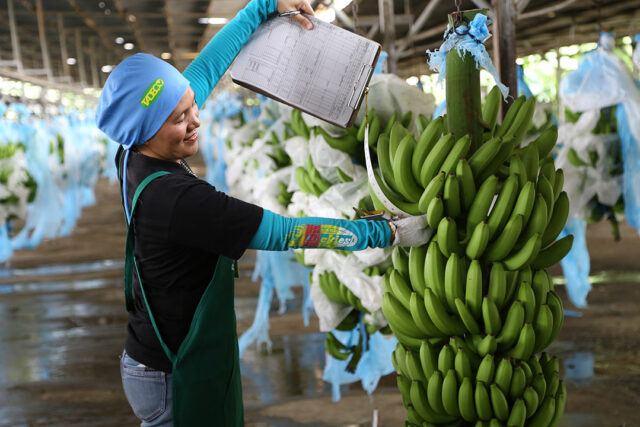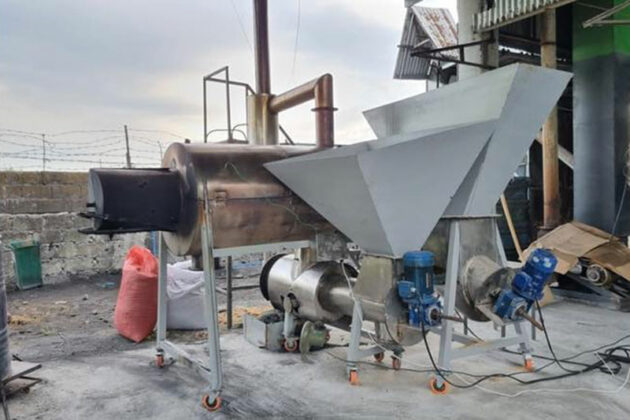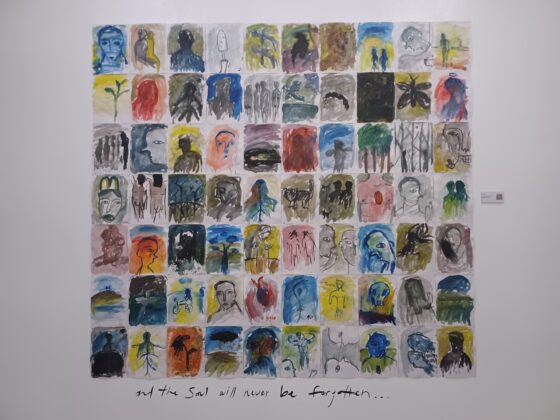Agribusiness executives should be upskilled
(Part 1)
A positive sign that the administration of President Bongbong Marcos is on the way to improving the productivity of the agribusiness sector is the increasing number of Philippine conglomerates diversifying into agriculture and investing substantial amounts of long-term capital in the sector.
There is the First Pacific group led by Manny Pangilinan, who is diversifying from their major investments in infrastructures and energy into sugar and dairy production. Benguet Corp. — the gold and nickel mining company — is planning to invest in a big way in large-scale coconut farming in Samar and Leyte.
The DMC Consunji group has already expanded its long-term investments in agriculture in Mindanao by leasing hundreds of hectares of deforested lands in the south of Negros Occidental to plant palm oil. Luis Lorenzo, Jr., a former Agriculture secretary and part of the family that pioneered in pineapple plantations in the last century, is now diversifying in a big way into bamboo plantations that will be the source of raw materials for manufacturing construction materials that can equal the strength of steel.
The Aboitizes are expanding their investments in food and beverage manufacturing. This trend is a far cry from the former practice of the biggest Philippine banks who preferred to pay hundreds of millions of pesos in penalty to the BSP so as not to be obliged to lend to agribusiness projects under the Agri-Agra law.
Because agriculture was always what I called the “Cinderella” of the Philippine economy — neglected and unwanted — even the best minds who took up agricultural sciences in UP Los Baños and other universities (like the Araneta University and Silliman University in Dumaguete) ended up working in many fields that had nothing to do with food security. As one of the graduates of the “school of marketing” of Procter & Gamble (I had a short stint as a brand manager at P&G in the late 1950s), I met a good number of graduates of agricultural courses (especially from UP Los Baños) who ended up selling soap and toothpaste for P&G or Unilever.
A good number of them became bank executives, etc. That is why, as an avid proponent today of agribusiness development, I was happy to learn that a friend of mind, Jovy Hernandez, who studied agricultural sciences in Los Baños but who spent most of his professional life in other fields (including a long stint at PLDT) has been designated as the CEO of the First Pacific Agribusiness Venture and is now busy leading his company in importing hundreds of dairy cattle to produce some of the milk requirements of Carmen’s Best, an ice cream company that they bought from another friend of mine, Ramon (Jun) Magsaysay, Jr.
If I were working for an executive search company like Ward Howell or John Clements, I would be busy contacting executives in their 40s and 50s who are graduates of agricultural courses but have been working in other fields. They would be in great demand.
But even more urgent is the upskilling, reskilling and retooling of those managers who are already working for agribusiness enterprises, especially on the island of Mindanao. I am referring to such famous agribusiness companies as Anflo Group of Companies (foremost of which is Tagum Agricultural Development Co.), Lapanday, South Davao Development Co., Inc. of the Consunji group, Alsons Aquaculture Corp., NutriAsia, Del Monte, INFARMCO, Kenram Palmoil Industries, La Frutera, San Miguel Corp., Santeh Feeds, Sarangani Agricultural Co., Sumifru Philippines, Tateh Feeds, Unifrutti Philippines and Vitarich Corp. These have been among the forward-looking business groups that defied all the adverse circumstances surrounding the agricultural sector during the decades of neglect and failed attempts at an enlightened approach to agrarian reform, as what happened in our most successful neighbors like Taiwan, Thailand and Vietnam. These exceptional companies proved that money could be made in agribusiness despite all the odds that they faced in a hostile environment.
Thanks to the leadership of the late Rolando Dy who for more than 30 years headed the Center for Food and Agribusiness (CFA) of the University of Asia and the Pacific and the generous financial support of Walter Brown, founder of A. Brown Energy Resources, already as early as 2015, UA&P started to address the need to upskill and reskill top and middle managers of the leading agribusiness corporations.
With close cooperation from government agencies and the academe, the CFA of UA&P launched in 2015 the six-month, part-time agribusiness executives program that has turned out about 280 graduates, especially coming from the corporations mentioned above. Over the past 10 years, the program has been held in Davao, where most of the agribusiness enterprises are located. In 2017 and 2018, there were parallel runs in Baguio — also a hub for high-value food production — to cater to the Luzon market today.
The agribusiness executives program is a six-month certificate program. Today, the name of the game is no longer a college or masteral degree, but a certification of skills acquired in a work-study program aimed at developing the managerial, analytical and strategic thinking skills of executives and managers working in the agribusiness industry. Here, it is important to point out that agribusiness goes much beyond farming. It encompasses the whole supply chain involved in the production of food or agricultural raw materials, such as post-harvest, cold storage, logistics, processing, wholesale, retail up to the final consumer. The design of the program was based on a comprehensive need analysis of key agribusiness companies and developed in collaboration with agribusiness practitioners and experts. It adopts an action-learning approach that emphasizes skill development and the application of theoretical learning to specific agribusiness projects and related industries.
The agribusiness executives program targets middle and senior level managers and executives in the food and agribusiness sector who are directly or indirectly involved in planning, program/project implementation or are expected to be engaged in such activities in the future. Among the 280 certificate holders are managers from both the private and public sectors such as BFAR, DA, DTI, DepEd ARRRM, Mindanao Development Authority and DENR-MGB.
Participants go through six modules offered via a blended learning approach, using a combination of online and face-to-face sessions. For those interested in participating in the next run of the program, they may contact aep@uap.asia. The next module will run from September 2024 to March 2025 — one module per month, excluding December — with a total of 2.5 days per month, usually Thursday to Saturday afternoon. The program includes field visits to agribusiness projects during the fifth module. The last module will be held at the UA&P campus in Ortigas, Pasig City, culminating in graduation.
(To be continued.)
Bernardo M. Villegas has a Ph.D. in Economics from Harvard, is professor emeritus at the University of Asia and the Pacific, and a visiting professor at the IESE Business School in Barcelona, Spain. He was a member of the 1986 Constitutional Commission.

















